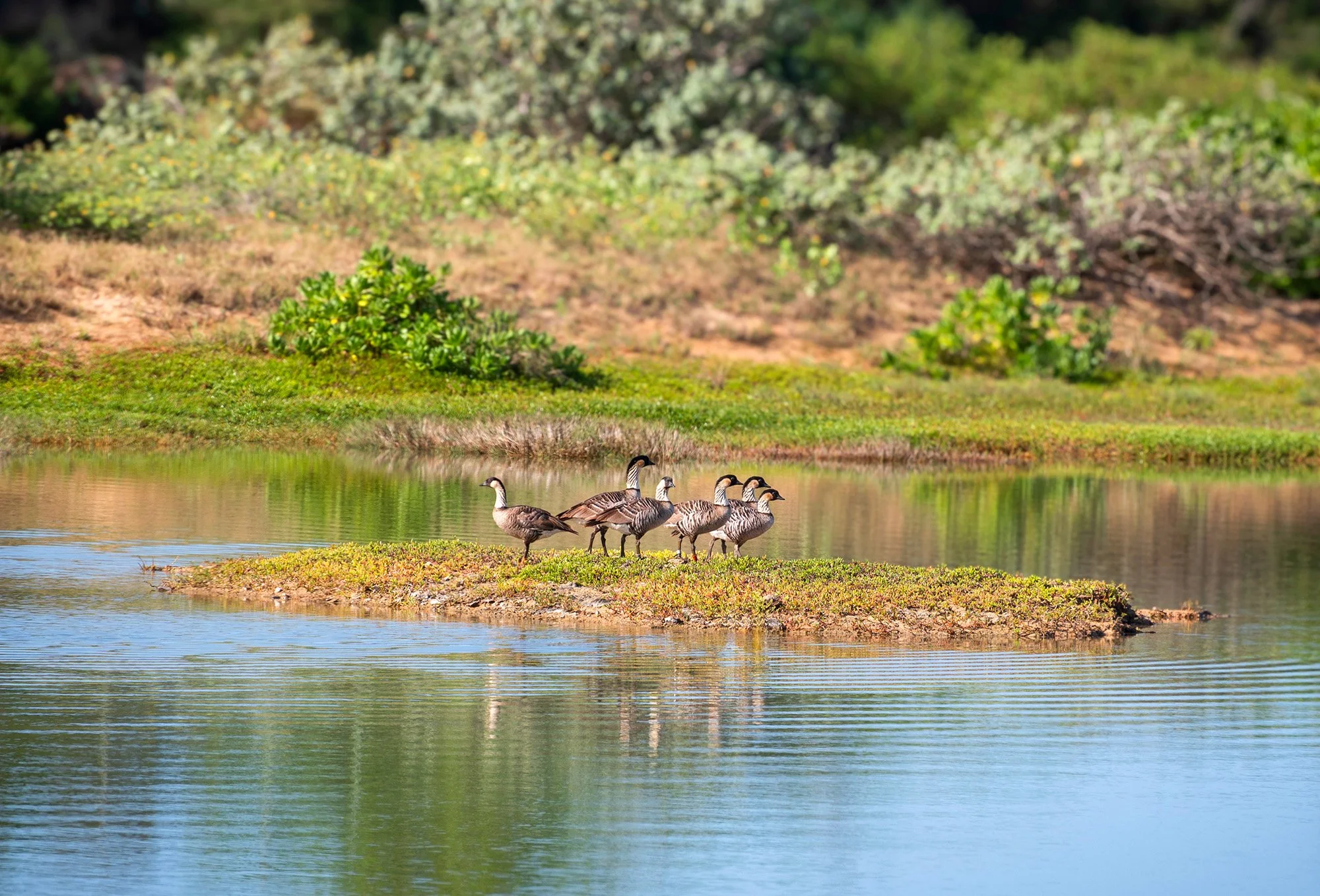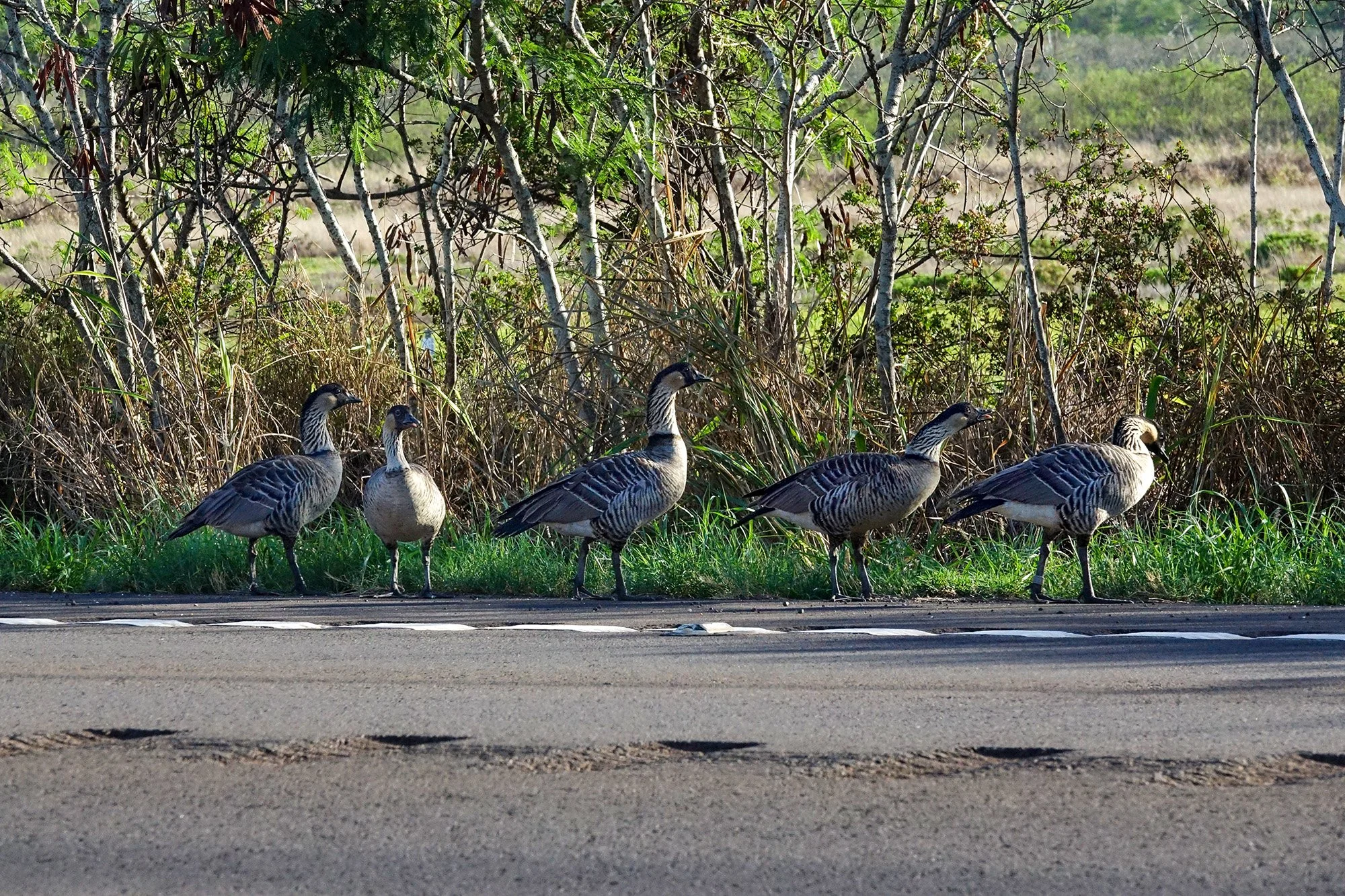


Mānā Plains Nēnē Project
On Kauaʻi, many of us have had encounters with nēnē—a testament to the extensive efforts made to protect them. While their recovery is seen as a major conservation achievement, their numbers remain low. Currently listed as Threatened under the Endangered Species Act, the population is estimated at just 3,864 birds. Despite progress, they still face serious risks, especially from vehicle strikes.
The nēnē is the rarest species of goose in the world, found only in the Hawaiian Islands. Uniquely suited to this environment, they have partially webbed feet that help them navigate rugged lava fields. In 1957, the nēnē was named Hawaii’s State Bird to raise awareness about its steep population decline.
On Kauaʻi, we are collaborating with The Department of Land and Natural Resources (DLNR) to address the issue of road collisions and our endangered hawaiian goose, the nēnē (Branta sandvicensis). Using a combination of roadside, powerline, and drone surveys, we are partnering with local agencies and landowners to identify the risks to nēnē. We will identify and create solutions to mitigate their interactions with roads on the west side of Kauaʻi. We will also be deploying GPS tracking tags on a small number of nēnē to help us understand their fine scale movements and habitat preferences. This project will run from September 2025 to September 2026.
We want your sightings! If you see a dead nēnē, please call or text Anna at The Department of Forestry and Wildlife (DOFAW) 808-634-0963



